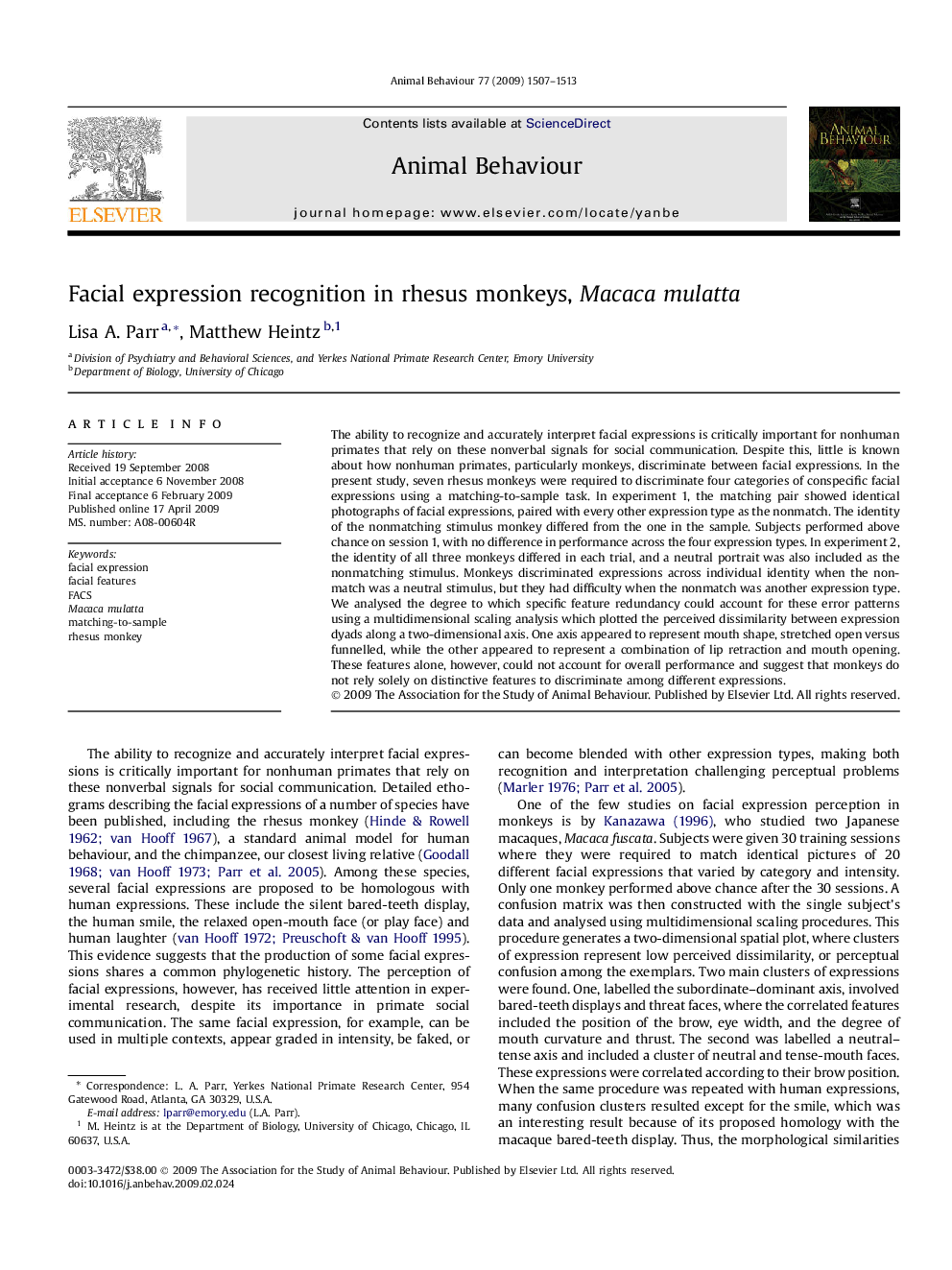| Article ID | Journal | Published Year | Pages | File Type |
|---|---|---|---|---|
| 2418042 | Animal Behaviour | 2009 | 7 Pages |
The ability to recognize and accurately interpret facial expressions is critically important for nonhuman primates that rely on these nonverbal signals for social communication. Despite this, little is known about how nonhuman primates, particularly monkeys, discriminate between facial expressions. In the present study, seven rhesus monkeys were required to discriminate four categories of conspecific facial expressions using a matching-to-sample task. In experiment 1, the matching pair showed identical photographs of facial expressions, paired with every other expression type as the nonmatch. The identity of the nonmatching stimulus monkey differed from the one in the sample. Subjects performed above chance on session 1, with no difference in performance across the four expression types. In experiment 2, the identity of all three monkeys differed in each trial, and a neutral portrait was also included as the nonmatching stimulus. Monkeys discriminated expressions across individual identity when the nonmatch was a neutral stimulus, but they had difficulty when the nonmatch was another expression type. We analysed the degree to which specific feature redundancy could account for these error patterns using a multidimensional scaling analysis which plotted the perceived dissimilarity between expression dyads along a two-dimensional axis. One axis appeared to represent mouth shape, stretched open versus funnelled, while the other appeared to represent a combination of lip retraction and mouth opening. These features alone, however, could not account for overall performance and suggest that monkeys do not rely solely on distinctive features to discriminate among different expressions.
